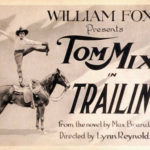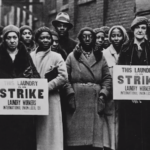Streaming Video: A Library Staple for Modern Times
By Peter Monaghan
.
The days of college students poring over books in library stacks, seeking inspiration in leaps within and among Dewey Decimal System categories, are virtually gone. That’s not how students now access information.
That’s apparent upon merely strolling through any college library. Books can seem almost an afterthought, shunted into spare corners and reaches to make way for computer stations and expanses of “learning commons” where students cluster to discuss lessons and work together on assignments. “Silence please” signs are restricted to designated quiet zones, often in small rooms behind what book stacks remain, while “no food or drink” signs are often no longer in evidence, at all.
In this new college-library scenario, usage of printed books, or any non-digital resources, such as selections from libraries’ sometimes vast hoards of VHS videotapes, has decreased surely and rapidly as digitized or born-digital material, such as e-books, has emerged to dominate library circulation.
Among the digital resources and services are audiovisual media that will become only more important in the dissemination of research and general information. Streaming video, in which content travels in compressed form over the Internet so that viewers can watch it without first downloading files — can watch it in a stream — is the dominant audiovisual technology. That is thanks to how easily students, instructors, and researchers can call it up on library computer terminals and their own laptops, iPods, cellphones, and desktops in, near, or far from libraries.
 In 2010, 33 percent of American university and college libraries offered streaming video, among their services; by 2013, 70 percent of those libraries offered it, and the number has surged, since. In a 2015 survey, 91 percent of college libraries said they had at least begun to offer streaming video, and the rest said they planned to, soon.
In 2010, 33 percent of American university and college libraries offered streaming video, among their services; by 2013, 70 percent of those libraries offered it, and the number has surged, since. In a 2015 survey, 91 percent of college libraries said they had at least begun to offer streaming video, and the rest said they planned to, soon.
But the advent of streaming video has occurred in a haphazard way, and that has created stresses that librarians are struggling to handle. “The market is a hodgepodge of sources, pricing models, delivery platforms, licensing terms, and limitations,” says deg farrelly, who recently retired as a librarian at Arizona State University, where he built a large VHS collection.
The advent of streaming video
It is old news to any research librarian, and pretty much any faculty member, that college and university students can now access streaming video through online catalogs and other library portals. Among the materials that libraries offer, in that way, are digitized copies of VHS tapes and DVDs that librarians and technical staff have sent out to specialist companies for digitization; some, they have digitized, themselves. Increasingly, however, outside vendors provide streaming-video content. Those companies typically collect digital video from various producers, and offer it to institutions either in packaged collections, or as individual items that libraries can buy through a shopping-trolley system.
Such vendors also determine whether libraries and library patrons may download the material to individual library computer servers — for inclusion in collections of materials for particular courses, for example. Streaming and downloading may be in perpetuity (for the “life of the format”), or more commonly for fixed terms, such as one to three years.
Most access, however, is through subscriptions to collections, in a market that is “shaking down to four players,” says farrelly.
A little more than a decade ago, he says, very few companies were offering streaming video. Some limited, local efforts had been made. Now, many vendors are in the market, offering many, varied collections. Many are very specialized, some more along the lines of an academic Netflix.
The four dominant players are Films on Demand, Alexander Street, Docuseek, and Kanopy.
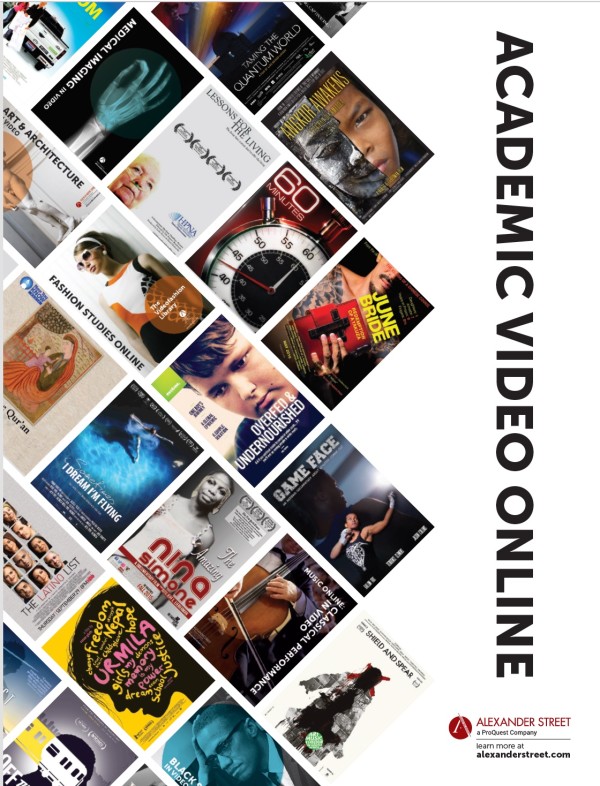 Alexander Street, headquartered just outside Washington, D.C., and since 2016 owned by the information-content giant, ProQuest, offers many collections, such as series on American history, education, theater, Shakespeare, classical music, opera, and dance. It has a popular series on counseling and therapy education. Among its specialized collections are Asian Film, Black Studies, Engineering Case Studies, and PBS Video Collection. It also has series, but not many takers, on primary education, Australasian video, and the John Cleese Business Bundle.
Alexander Street, headquartered just outside Washington, D.C., and since 2016 owned by the information-content giant, ProQuest, offers many collections, such as series on American history, education, theater, Shakespeare, classical music, opera, and dance. It has a popular series on counseling and therapy education. Among its specialized collections are Asian Film, Black Studies, Engineering Case Studies, and PBS Video Collection. It also has series, but not many takers, on primary education, Australasian video, and the John Cleese Business Bundle.
New York-based Films Media Group is an enormous company with such subsidiaries as the academic-oriented Films on Demand, whose popular selections include Master Academic Collection, a vast, broad selection of more than 26,000 titles from many, varied fields, with subcollections similar in range and kind to Alexander Street’s.
Docuseek, based in San Francisco, is really a platform that 10 distributors have built so they have a shared distribution point, and common pricing. It is small, with about 1,000 titles. (It and Alexander Street agreed a partnership arrangement in 2016.)
Kanopy, an Australian company, is the upstart in the market. It offers what is called “demand-driven” and “patron-driven acquisition,” which amounts to opening up a smorgasbord of films from which libraries choose, paying only for what they use. (The downside of that structure is that educational institutions pay each time they wish to use a title.)
In their report, Academic Library Streaming Video: Key Findings from the National Survey, farrelly and his colleague Jane Hutchinson Surdi, a now-retired media specialist at William Paterson University, wrote that spending on collections now far outstrips spending on individual hard-copy DVD and Blu-Ray titles.
The appeal of collections is that they provide many items at a flat rate, and that new titles are added, along the way; their limitation is that because vendors curate and stream material in the collections, librarians have little if any role in determining what the collections contain.
That means that college and university librarians, or staffers in information-technology units, face tricky choices when they undertake to provide access to audiovisual resources.
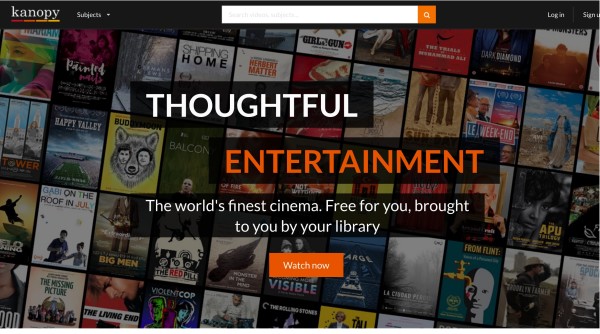 Cost is predictably a major sticking point. Library budgets never come close to meeting user demands, or desires. Individual video titles are costly, and so too are streaming-video services. Academic libraries face an additional challenge, in that regard, farrelly says: “Home videos drove down prices in the mid-1970s, but not particularly for documentary and educational films.”
Cost is predictably a major sticking point. Library budgets never come close to meeting user demands, or desires. Individual video titles are costly, and so too are streaming-video services. Academic libraries face an additional challenge, in that regard, farrelly says: “Home videos drove down prices in the mid-1970s, but not particularly for documentary and educational films.”
Subscribing to large streaming-video collections may initially offer, or seem to offer, budget benefits; but those may be illusory. The services may, for example, initially charge according to user demand, but then switch to one-to-three-year licenses, often more expensive than smaller institutions can really afford. And, says farrelly, term licensing means paying again, when subscriptions need to be renewed. And even collections purchased “in perpetuity” commonly come with further costs, such as annual maintenance fees.
“The bottom line is libraries are paying more for the same content when selecting streaming over DVD,” farrelly wrote in a 2016 overview of the market, “Issues in Academic Library Streaming Video.”
The combination of burdensome cost and being locked into collections that may or may not include preferred titles, he says, may “negate a library’s ability to acquire new content and/or exhaust the library’s materials budget for media.”
A further complication may be that libraries end up with duplicate selections from different sources that they have acquired through the variety of models – subscription, purchase, term license, demand driven, vendor hosted, library hosted…
Such problems camouflage an historic tension in video provision: whether to build a distinctive collection housed at a particularly institution, as farrelly did, or merely to provide access to collections built by relatively faceless corporations like Films Media Group. The latter option may better suit curriculum design, but only if the design fits the collection.
The drift away from collection building at academic libraries is reflected in 2015 figures showing that of libraries that provide streaming, only one-quarter of the institutions devoted more than one full-time employee to the task. Most devoted less than one-half of one FTE.
Responsibility for figuring out what to buy or subscribe to generally falls to librarians of one kind or another: media librarians, collection-development librarians, subject librarians (who oversee specific areas of collection building, such as sciences, or humanities, or part of those large fields), and electronic-resources librarians. To compensate for scant staffing, many libraries depend on membership in library consortia, which may afford added clout when negotiating contracts with vendors.
Libraries are not spending terribly large amounts — other than the larger libraries, they can’t afford much. On average, they spend only about $25,000 a year on streaming video, which nowadays is more than average spending on physical DVDs or Blu-Ray discs, on which outlays are quickly dropping.
Issues with big packages
Big streaming-video packages have obvious pluses, but also minuses. They often leave smaller production companies out of their mix. In the positive column, however, is that the large vendors are in competition, and that may result in better deals for smaller producers who do make the cut, such as Milestone Films, which restores non-mainstream documentary and entertainment films.
A glitch with some packages that will mean more to librarians than non-specialists is that only some packages come with the detailed metadata that are librarians’ bread and butter. If vendors do not fully load their selections with needed or preferred metadata, librarians are not able to readily or automatically catalog them, and face the challenge of manually loading data into their libraries’ records.
But the most urgent challenge for video librarians is not what is in packages, but what is in their own collections, farrelly says. If librarians do not convert those titles to digital format, they may simply become unusable as tapes in VHS format reach their highly variable life expectancies. “The preservation of content in obsolete formats [such as VHS] is not something that market forces are going to do anything with,” he fears.
He cautions that, because the VHS format is reaching its life expectancy, the rate of deterioration threatens to be rapid, a conflagration: “It is a fire that is soon going to be burning out of control.”
VHS opened up a new market for collection development in academic institutions, but VHS was never the video format that librarians preferred during the “video format war” of the late 1970s and 1980s — they knew that it would have negative archiving outcomes. “Magnetic media is a lousy format, and was never really designed to be a long-term format,” farrelly says.
The DVD format (and Blu-Ray, if you could afford it) superceded VHS, but vast amounts of content never made it from VHS to DVD or Blu-ray formats, much as vast amounts of less commercially in-demand audio recordings were never transferred from the LP to the CD platform. Says farrelly: “There are thousands upon thousands of hours of content that was released in VHS format that has never been released to DVD, and that hasn’t been made available in streaming format.”
In video, the DVD and Blu-Ray look like going the way of the dodo, which threatens to make collection orphans of DVD and Blu-Ray based material, as machinery to play it become antiquated.
You may think that far fetched, but not if you get out your LPs, cassette tapes, 8-track cartridges, and minidiscs, and wonder what to play them on. Says farrelly: “VHS is already an obsolete format, because the last manufacturer of VHS equipment produced the last VHS unit last summer, more than a year ago, now.”
Realistically, refurbishing consumer-grade video players buys the VHS format only a few years.
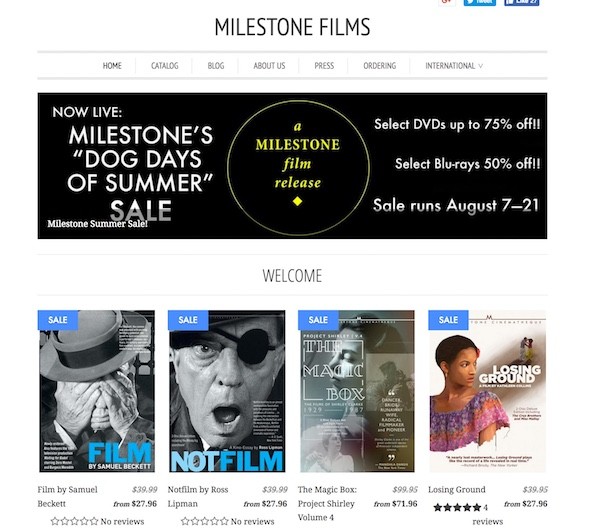 The best hope for VHS collections, says farrelly, is a measure built into U.S. copyright law, Section 108. “It’s an incredibly powerful segment of US copyright law,” farrelly says. It allows institutions that own deteriorating video tapes to duplicate them for the purpose of preservation provided good copies are not commercially available at a fair price after a reasonable search.
The best hope for VHS collections, says farrelly, is a measure built into U.S. copyright law, Section 108. “It’s an incredibly powerful segment of US copyright law,” farrelly says. It allows institutions that own deteriorating video tapes to duplicate them for the purpose of preservation provided good copies are not commercially available at a fair price after a reasonable search.
What that means, in effect, is that a library that has a commercial VHS tape that has not already been digitized may go ahead and digitize it. Sadly, farrelly says, few librarians are doing that.
Two years ago, he and two colleagues began the Section 108 Due Diligence Project. That is a database of titles for which a librarian, somewhere, has done due diligence: has ascertained that copies in good condition are not commercially available.
The database now has 2,657 titles, and it serves to alert librarians around the country that, if they have a copy of any particular title, they should feel free to digitize it.
The database is far, far short of complete. Only 14 academic libraries have contributed to it, and of those, only 4 have certified the Section 108 status of more than two titles.
The database’s keeper, Chris Lewis, a librarian at American University, is working to publicize it.
What is needed, farrelly says, is a coordinated effort among video librarians, to optimize the preservation project. It only makes sense, he believes, that if one librarian digitizes a VHS title, any librarians who have that title in their collections should be able to receive the digitized copy file from the librarian who first has it copied.
Does Section 108 allow that?
“This is where librarians would have to push the envelope, a little bit,” farrelly says. Presumably, he says, the law would protect them, as long as they own a copy of any title they make or receive. “The law doesn’t say that a library has to make its own copy,” he says.
In any case, he continues, “the risk is very low, because we’re talking about content that is out of distribution, that is not commercially available.
“The only problem this could create: a distributor, a copyright holder could come forward, and say ‘maybe there’s a market for this, and you’re diminishing my market by making these copies available.’ But that can be handled on a case-by-case basis.”
He says a librarian could simply say, “OK, good, we’ll take it out of the database.”
Farrelly tries to be optimistic about the prospects, but says: “American libraries do not have a very good track record on preservation issues,” in regards to video or any other medium. One complication, with video, is that copying must be done in real time: librarians have to play videos while copying them, and can’t set up rapid-copy stations with automatic page turners, as can be done for books.
With video, “if you’ve got an hour’s worth of video, it’s going to take an hour and ten minutes to set up a copying system, and make a copy,” he says.
Video, the red-haired stepchild
Not helping the situation is that academic libraries have historically been rather grudging, when it has come to video collection. That prejudice is felt across academe. It explains, for example, why only a small handful of institutions have even bothered to undertake campus-wide surveys to ascertain the scope and contents of their holdings of audiovisual materials. (One reason they hesitate to make such surveys is that, after logging their holdings, pressure would mount to preserve them.)
“In my opinion,” says farrelly, “there remains a very strong bias against media in the academy.
“Video is the red-headed stepchild.”
But the popularity of streaming video may change that, he says. “Students are demanding video content, and new faculty are demanding it. The younger generation was raised with media, and know the value of media, and they’re constantly uncovering new content, in their research, or at conferences, then coming back to their own libraries.”
Previous Post: How Do People Dance? Choreometrics on Film.
Next Post: The VHS Legacy Can Be Saved, But Will It?


